I have following table
╔════════╦════════╦════════╦════════╗
║ record ║ Brand ║ Model ║ Spec ║
╠════════╬════════╬════════╬════════╣
║ 1 ║ X ║ null ║ 1 ║
║ ║ X ║ DF ║ 3 ║
║ ║ X ║ null ║ 5 ║
║ 2 ║ Y ║ null ║ 1 ║
║ ║ Y ║ AB ║ 3 ║
║ ║ Y ║ null ║ 5 ║
╚════════╩════════╩════════╩════════╝
And would like to get following
╔════════╦════════╦════════╦════════╗
║ record ║ Brand ║ Model ║ Spec ║
╠════════╬════════╬════════╬════════╣
║ 1 ║ X ║ DF ║ 1 ║
║ ║ X ║ DF ║ 3 ║
║ ║ X ║ DF ║ 5 ║
║ 2 ║ Y ║ AB ║ 1 ║
║ ║ Y ║ AB ║ 3 ║
║ ║ Y ║ AB ║ 5 ║
╚════════╩════════╩════════╩════════╝
ie. I'm dreaming about something like 'fill up' analogue to the fill down tutorial
I haven't found a functionality which covers that out of the box. Do you have further information?
